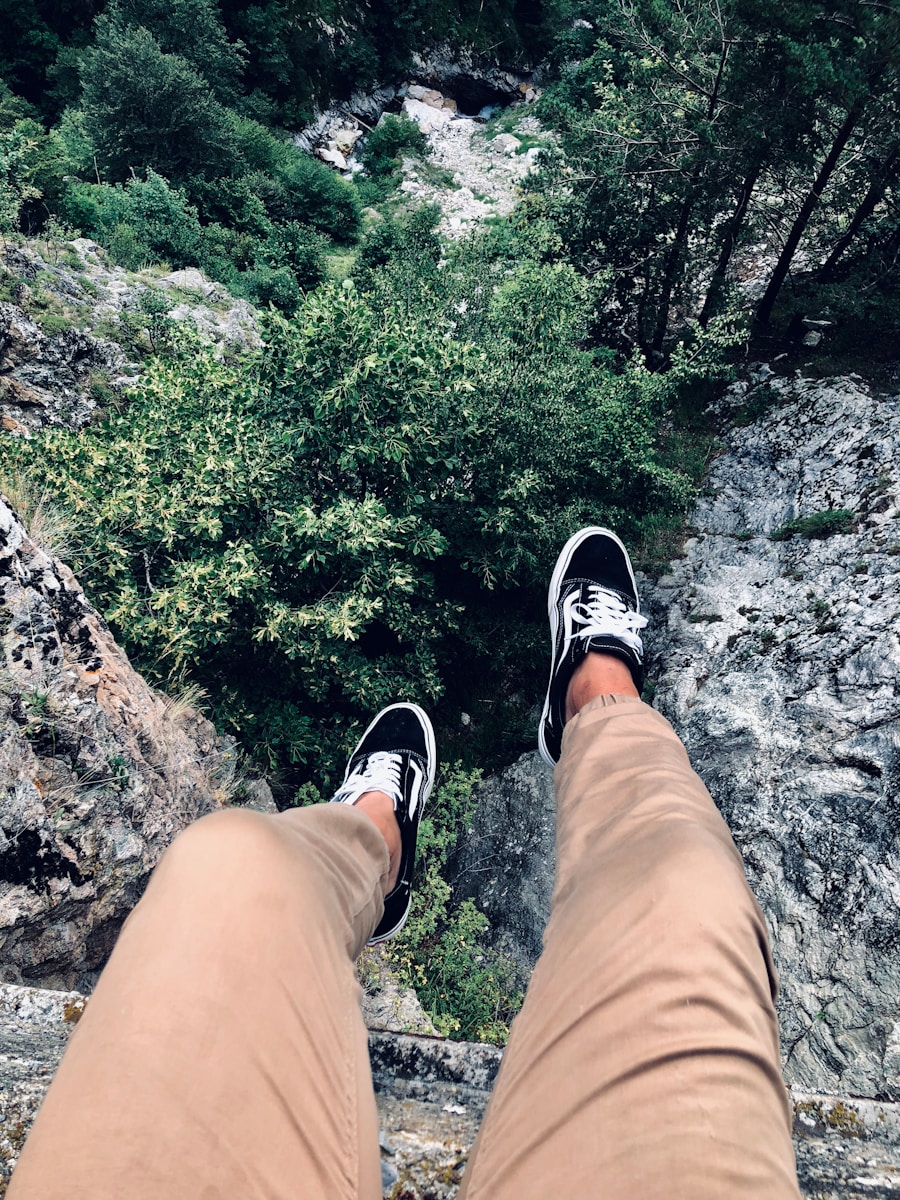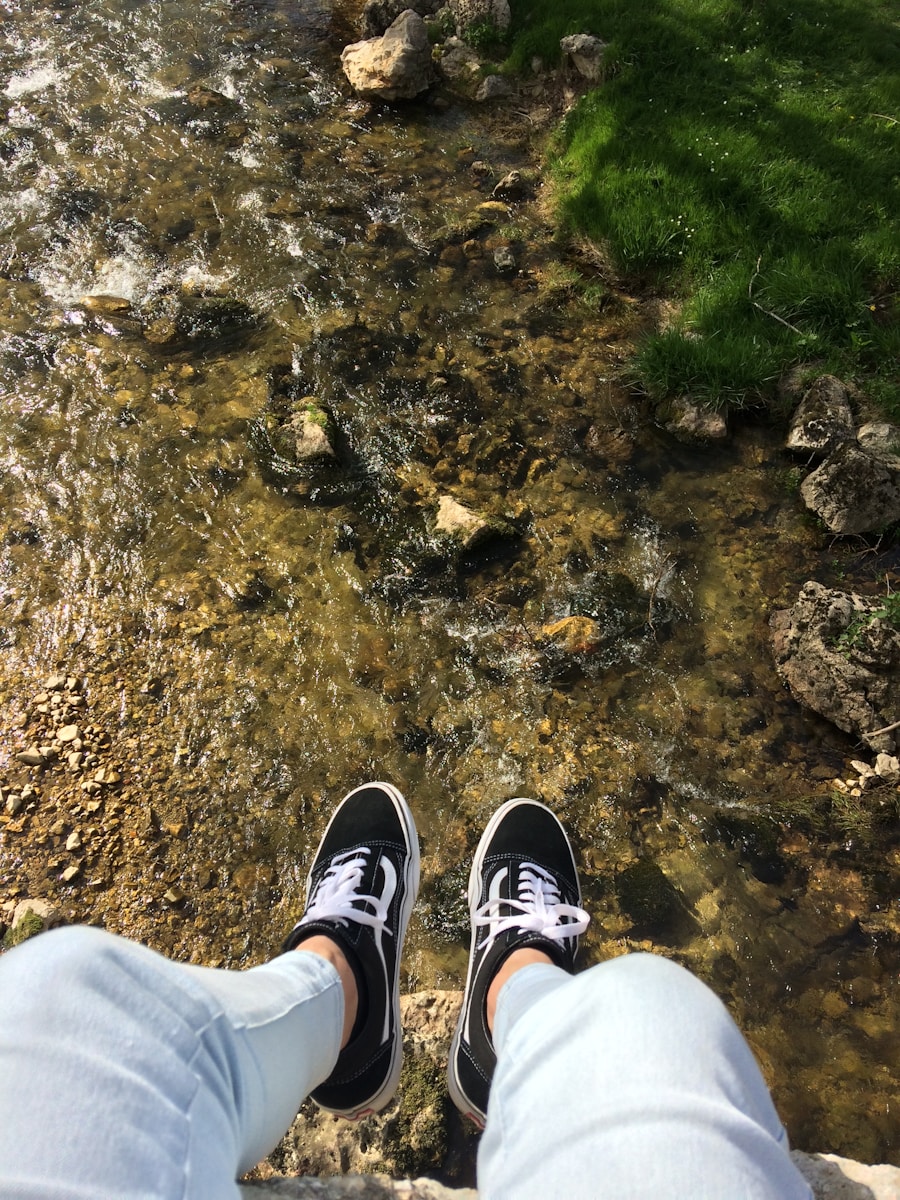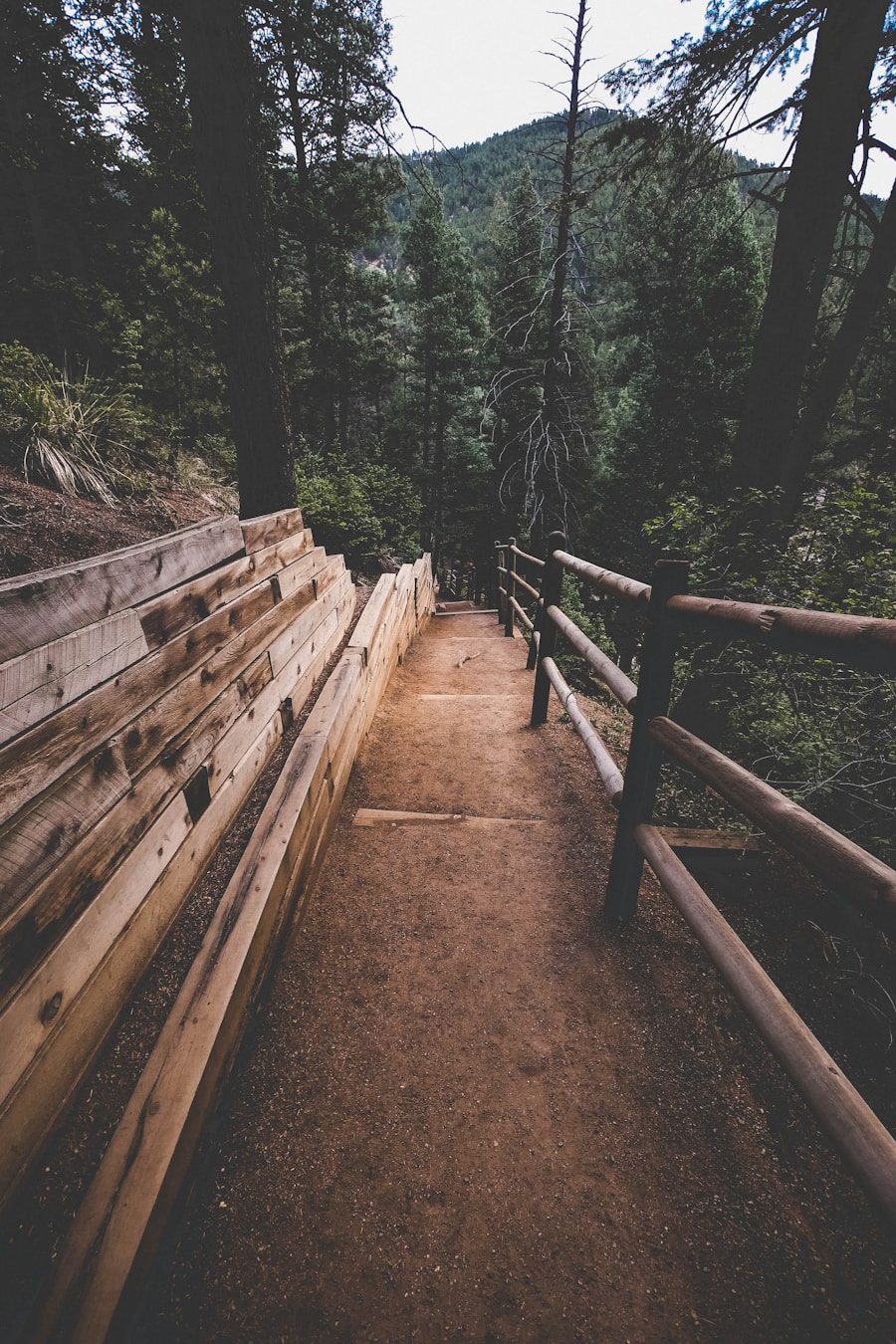The Rocky Mountains, often referred to simply as the Rockies, stretch over 3,000 miles from Canada down to New Mexico, forming a majestic spine that defines the western United States and parts of Canada. This awe-inspiring mountain range is characterized by its rugged peaks, deep valleys, and diverse ecosystems, making it a haven for outdoor enthusiasts and nature lovers alike. The Rockies are not just a geographical feature; they are a tapestry of natural beauty woven from towering granite spires, lush alpine meadows, and crystalline lakes.
Each season brings its own charm, from the vibrant wildflower blooms of summer to the snow-draped landscapes of winter, creating a dynamic environment that captivates visitors year-round. The region is home to several national parks, including Rocky Mountain National Park in Colorado and Banff National Park in Alberta, Canada. These protected areas showcase the Rockies’ stunning vistas and rich biodiversity.
The interplay of light and shadow on the mountains at sunrise and sunset creates breathtaking panoramas that have inspired countless artists and photographers. The Rockies are also steeped in cultural history, with Indigenous peoples having inhabited these lands for thousands of years, leaving behind a legacy that adds depth to the natural beauty. As one traverses the trails and valleys, the echoes of history resonate through the landscape, inviting exploration and reflection.
Key Takeaways
- The Rockies offer stunning natural beauty and diverse landscapes for hikers to explore.
- Essential gear for hiking in the Rockies includes sturdy hiking boots, layers of clothing, a backpack, water, and a map.
- Some of the best hiking trails in the Rockies include the Banff National Park, Lake Louise, and the Icefields Parkway.
- Safety tips for hiking in the Rockies include staying on marked trails, being aware of wildlife, and carrying bear spray.
- Wildlife encounters in the Rockies can include sightings of bears, elk, moose, and bighorn sheep.
Essential Gear for Hiking in the Rockies
When preparing for a hiking adventure in the Rockies, having the right gear is crucial for both safety and enjoyment. The unpredictable weather patterns in this mountainous region necessitate a well-thought-out packing list. A sturdy pair of hiking boots is essential; they should provide ample support and traction on rocky terrain while being comfortable enough for long distances.
Waterproof options are particularly beneficial, as sudden rain showers can occur even in summer months. Additionally, moisture-wicking socks can help prevent blisters and keep feet dry during hikes. Clothing layers are another vital component of hiking gear in the Rockies.
The temperature can fluctuate dramatically throughout the day, so wearing moisture-wicking base layers, insulating mid-layers, and waterproof outer layers is advisable. A good-quality rain jacket can be a lifesaver during unexpected downpours. Accessories such as hats, gloves, and sunglasses should not be overlooked; they protect against sun exposure at high altitudes and keep you warm during chilly mornings or evenings.
A well-fitted backpack is also essential for carrying water, snacks, and other necessities. Hydration systems or water bottles should be included to ensure you stay hydrated throughout your hike.
Best Hiking Trails in the Rockies

The Rockies boast an extensive network of hiking trails that cater to all skill levels, from leisurely strolls to challenging backcountry routes. One of the most iconic trails is the Longs Peak Trail in Colorado’s Rocky Mountain National Park. This strenuous hike leads adventurers to the summit of Longs Peak, standing at 14,259 feet.
The trail offers breathtaking views of alpine lakes and rugged terrain but requires careful planning due to its elevation and potential weather changes. Hikers often start before dawn to reach the summit by sunrise, experiencing a magical moment as the first light illuminates the surrounding peaks. For those seeking a more moderate hike, the Emerald Lake Trail is a popular choice within Rocky Mountain National Park.
This 3.6-mile round trip takes hikers through lush forests and past stunning waterfalls before arriving at the picturesque Emerald Lake, surrounded by towering cliffs. The trail is accessible from late spring through early fall and is particularly beautiful when wildflowers bloom in summer. Another gem is the Icefields Parkway in Banff National Park, which offers numerous trailheads along its scenic route.
The Parker Ridge Trail provides an excellent opportunity to witness stunning views of the Saskatchewan Glacier while being relatively short at just 2.5 miles round trip.
Safety Tips for Hiking in the Rockies
| Safety Tips for Hiking in the Rockies |
|---|
| 1. Check the weather forecast before heading out |
| 2. Carry plenty of water and stay hydrated |
| 3. Wear appropriate footwear with good ankle support |
| 4. Bring a map and compass or GPS device |
| 5. Let someone know your hiking plans and expected return time |
| 6. Stay on marked trails and avoid shortcuts |
| 7. Be aware of wildlife and give them space |
| 8. Pack extra layers of clothing for changing weather conditions |
| 9. Carry a first aid kit and know basic first aid skills |
| 10. Respect the environment and leave no trace of your visit |
Hiking in the Rockies can be an exhilarating experience, but it also comes with inherent risks that require careful consideration. One of the primary concerns is altitude sickness, which can affect individuals at elevations above 8,000 feet. Symptoms include headaches, nausea, and dizziness.
To mitigate this risk, hikers should acclimatize gradually by spending time at higher elevations before embarking on strenuous hikes. Staying hydrated and avoiding alcohol can also help prevent altitude-related issues. Wildlife encounters are another aspect of hiking safety in the Rockies.
The region is home to bears, moose, mountain goats, and other wildlife that can pose risks if approached or startled. It is essential to educate oneself about bear safety practices, such as making noise while hiking to avoid surprising bears and carrying bear spray as a precaution. Additionally, hikers should maintain a safe distance from all wildlife and never feed them, as this can lead to dangerous situations for both humans and animals.
Familiarizing oneself with trail conditions and weather forecasts before heading out can further enhance safety during hikes.
Wildlife Encounters: What to Expect in the Rockies
The diverse ecosystems within the Rocky Mountains support an array of wildlife species that hikers may encounter on their journeys. From majestic elk grazing in meadows to elusive mountain lions prowling through dense forests, the Rockies offer a unique opportunity to observe animals in their natural habitats. One of the most iconic species is the American bison, which can often be seen roaming freely in areas like Yellowstone National Park.
These massive creatures are not only impressive in size but also play a crucial role in maintaining the health of grassland ecosystems. Birdwatchers will find plenty to marvel at as well; over 300 species of birds inhabit the Rockies, including golden eagles and peregrine falcons soaring high above the cliffs. Hikers may also spot smaller creatures such as marmots and pikas among rocky outcrops or hear the distinctive calls of various songbirds flitting through the trees.
However, it’s important to remember that wildlife encounters should be approached with caution and respect. Observing animals from a distance allows for safe viewing while minimizing stress on their natural behaviors.
The Benefits of Hiking in the Rockies

Physical Health Benefits
Regular physical activity, such as hiking, improves cardiovascular health, strengthens muscles, and enhances overall fitness levels. The varied terrain of the Rockies provides an excellent workout that challenges different muscle groups while promoting endurance and flexibility.
Mental Health Benefits
Spending time outdoors has been shown to significantly reduce stress levels, leading to improved mood and mental clarity. The psychological benefits of hiking are particularly pronounced in the stunning environment of the Rockies. Studies have demonstrated that exposure to natural settings can enhance creativity and problem-solving skills while reducing symptoms of anxiety and depression.
Social and Personal Benefits
The tranquility found in remote trails or serene lakesides allows hikers to disconnect from daily stresses and reconnect with themselves. Additionally, hiking fosters social connections when shared with friends or family, creating lasting memories while promoting teamwork and communication.
When considering an adventure in the Rockies, hikers often face a choice between day hikes and overnight backpacking trips. Day hikes are ideal for those looking for shorter excursions that allow them to return home by evening while still experiencing breathtaking scenery. These hikes can range from easy walks suitable for families to more challenging routes for seasoned hikers seeking a quick thrill without committing to an overnight stay.
On the other hand, overnight backpacking offers a deeper immersion into the wilderness experience. Carrying all necessary gear for camping allows hikers to explore remote areas that are less accessible during day trips. This type of adventure provides opportunities for solitude and reflection under starry skies far removed from city lights.
Backpacking trips also enable hikers to witness sunrises and sunsets from vantage points that are often less crowded than popular day hike destinations. However, overnight trips require careful planning regarding food supplies, campsite selection, and navigation skills.
Planning Your Hiking Trip in the Rockies: Tips and Resources
Planning a hiking trip in the Rockies involves several key considerations to ensure a successful experience. First and foremost is selecting a destination that aligns with your skill level and interests; researching various trails through guidebooks or online resources can provide valuable insights into trail conditions, difficulty ratings, and scenic highlights. Websites like AllTrails or local park service pages offer detailed information about specific hikes along with user reviews that can help inform your choices.
Additionally, understanding park regulations is crucial for preserving these natural spaces for future generations. Many national parks require permits for backcountry camping or have specific rules regarding campfires and wildlife interactions. It’s also wise to check weather forecasts leading up to your trip; conditions can change rapidly in mountainous regions, so being prepared for rain or snow—even during summer months—is essential for safety.
Finally, consider joining local hiking groups or forums where you can connect with fellow outdoor enthusiasts who may share tips or even invite you on group hikes—an excellent way to enhance your experience while exploring this magnificent region.
If you’re planning a hiking trip, you may also want to consider the best travel razor to keep yourself groomed while on the go. Check out this article on the best travel razor for some great options to pack in your backpack. It’s important to have all the necessary gear for your adventure, including a reliable razor for personal hygiene.
Love travel? Join Our Facebook Community For More Tips.
FAQs
What is hiking?
Hiking is a recreational activity that involves walking in natural environments, often on trails or paths. It is a popular outdoor activity that allows people to explore and enjoy nature.
What are the benefits of hiking?
Hiking offers numerous physical and mental health benefits, including improved cardiovascular fitness, muscle strength, and mental well-being. It also provides an opportunity to connect with nature and reduce stress.
What should I bring on a hike?
Essential items to bring on a hike include proper footwear, water, a map or GPS device, a first aid kit, and appropriate clothing for the weather. It’s also important to bring snacks, sunscreen, and insect repellent.
How do I prepare for a hike?
To prepare for a hike, it’s important to research the trail, check the weather forecast, and inform someone of your plans. It’s also crucial to ensure you are physically prepared for the hike by gradually increasing your fitness level and carrying out any necessary training.
What are some popular hiking destinations?
Popular hiking destinations include national parks, mountain ranges, and coastal trails. Some well-known hiking spots include the Appalachian Trail in the United States, the Inca Trail in Peru, and the Milford Track in New Zealand.
